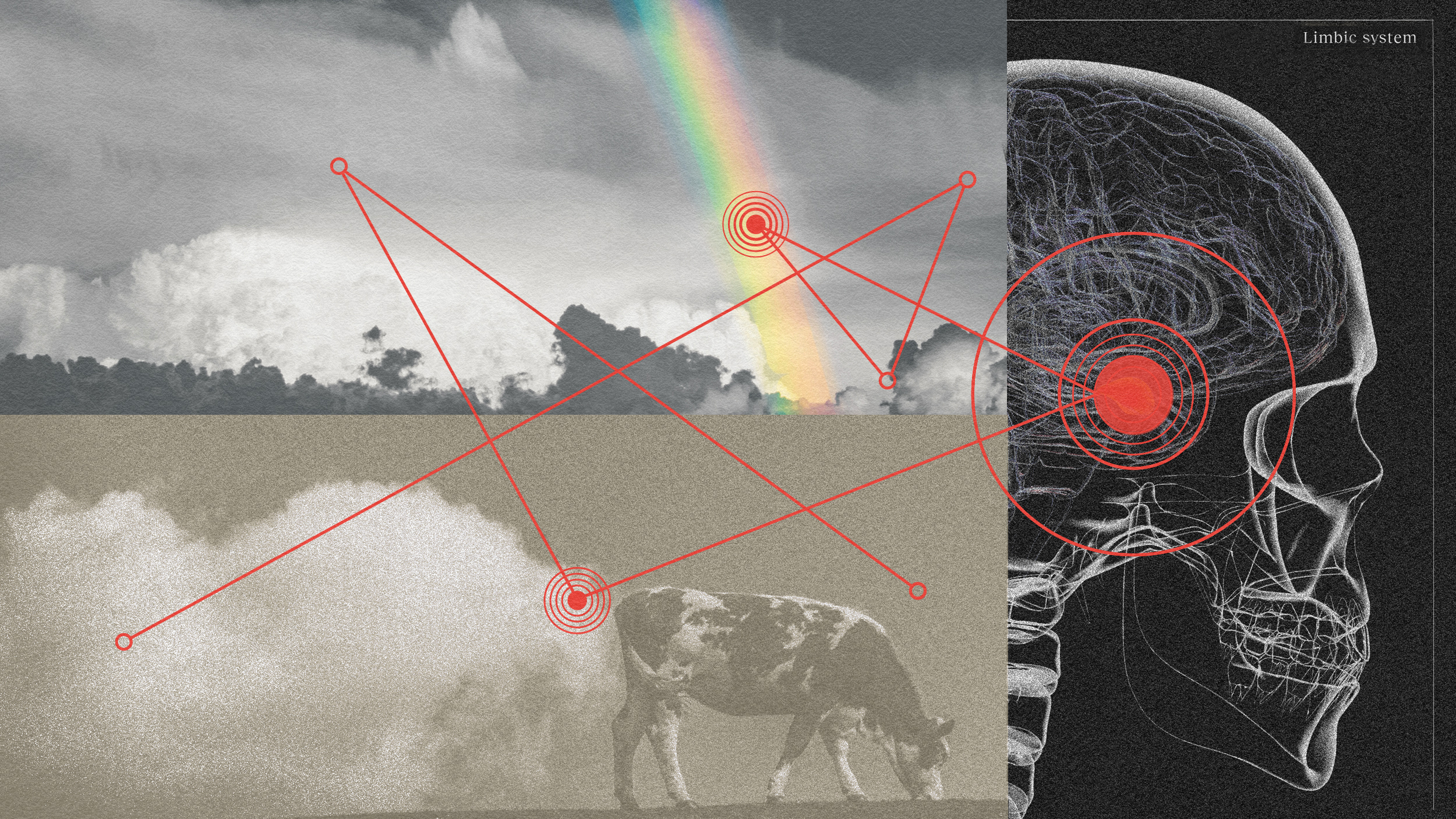There are three types of thinkers. Which one are you?
Temple Grandin, author and professor of animal science at Colorado State University, recognized early in her life that her mind worked differently from those of her peers and colleagues. As a neurodivergent woman in a male-dominated field, Dr. Grandin reveals how this different way of thinking led to groundbreaking advancements in the cattle industry.
According to Grandin, there’s a major problem with the modern day overgeneralization of the word “autism.” Those diagnosed are put in one single category with no distinction between each specific case, ultimately preventing neurodivergent people from discovering their passions and contributing their unique perspectives to society.
The best way to approach this problem, says Grandin, is to understand the 3 most common types of thinkers: visual thinkers like herself, pattern thinkers, and word thinkers. If educators and employers consider these different types of minds, they can create environments that maximize each individual’s intellectual strengths. By embracing this diversity, we together can build a society where every person has access to success; where everyone has the education, employment, and lifestyles that will help them thrive.
TEMPLE GRANDIN: Well, when I first started out my work in the cattle industry, designing equipment, I designed the front end of every Cargill beef plant in North America. I think that’s doing pretty good for somebody they thought was stupid.
Autism can range from just being kind of geeky and not that social to somebody that has much more severe problems like epilepsy, may not speak. And it’s all called the same name. That to me is overgeneralizing.
Now a lot of these super-good employees would probably be diagnosed today as autistic. I’m seeing a lot of smart kids being labeled autism, kids that we need in the workplace, and parents and teachers are getting too hung up on the label. They don’t think the kid can learn how to do anything. I’ve seen bad stuff just recently where they won’t let special ed kids take shop classes because of liability.
I had people that designed and built equipment for me that if they were kids they’d be special ed kids and they own the shops and they had twenty patents to go along with them.
Hi. I’m Temple Grandin. I am Distinguished Professor of Animal Science at Colorado State University. My most recent book is Visual Thinking: The Hidden Gifts of People Who Think in Pictures, Patterns, and Abstractions.
I had very severe speech delay and very severe symptoms as a young child, so I was very lucky to get into really early intervention. But there’s a lot of people that they discover that they’re autistic when their kids get diagnosed, and it will explain why they’re so socially awkward.
When I was in high school, I was bullied and bullied and bullied. That was the worst part of my life. The only places I was not bullied was friends who shared interests. The only places I was not bullied was riding horses, model rocket club, and electronic circuit building. And I often get asked, what would I tell my younger self? Well, I’d tell my younger self in high school that things are going to get better when high school’s over with.
What’s given my life meaning is having an interesting career. When I first started in the seventies in the Arizona cattle industry, being a woman was a much bigger barrier than autism. Autism was just about a non-issue. And I got along really well with the work crews out in the field. Most of the problems I had was middle management. It was not the big bosses that owned the places.
One of my very good mentors was Jim Uhle, a contractor. He had seen some of my drawings. He seeked me out. He had a little tiny construction company, maybe two employees for steel and concrete work. And the jobs that are shown in the HBO movie, Jim and I, built those jobs together. We worked together for ten years.
When I first started working with cattle, I looked at what cattle were looking at when they moved through shoots to get vaccinated. And at that time, I thought everybody was a visual thinker. I think in pictures. It’s what’s called an object visualizer. Everything I think about is a picture. And it was difficult for me to understand why other people didn’t notice that the cattle would refuse to walk over a shadow. They’d balk if they saw a reflection off the bumper of a vehicle. That’s just so obvious to me. I thought everybody thought that way until I was in my late thirties And there was a shock to find out that some other people thought in words. And not everybody’s thinking works the same way.
Research shows there’s actually three kinds of thinking. There’s object visualizers like me, where everything you think about is a picture, like a photograph. And then you have the visual-spatial pattern thinkers. These are your mathematicians. They think in patterns. And then you got your word thinkers that think in words. And then you’ve got mixtures of the different kinds of thinking.
So let’s discuss what the different kind of thinkers might be good at doing. My kind of mind, the object visualizer, will be good at mechanical devices because you can see how they work, art, photography, and animals. And the thing that we cannot do is abstract math. I can do arithmetic. I understand things like pi times the radius squared for sizing hydraulic cylinders and then I see the hydraulic cylinders when I say that.
Now your visual-spatial thinker who thinks in patterns, they’re going to be your IT people, your computer programmer, chemists, physicists, they calculate how to do things. And then of course you have your verbal thinkers that think in words where they’re much more linear in their thinking. Verbal thinkers are going to gravitate towards things like sales, where you have to be very good at talking. They’ll gravitate towards writing, legal, teaching.
Autism you tend to get an extreme thinker, you might get an extreme mathematician who’ll be a top physicist. Einstein didn’t talk until age three, he probably would be in an autism program today. Or you can get these extreme word thinkers that are very, very detail-oriented, very good at doing quality assurance, for example. We need all the different kinds of minds. And I’ve talked to a lot of business leaders. And the first thing I tell business leaders is you've got to understand that people think differently and that they can work together in very complementary ways.
If you want to successfully hire neurodivergent people with autism, dyslexia, or ADHD who are going to get the jobs done for you, we need to get rid of the conventional interview process. They need to have opportunities to come in and show off the work and show the work to somebody who would appreciate it rather than just interviewing based on how well they talk. Because you can have a super-good computer person that’s not very talkative, but that person may be your best programmer. So many people like me have had to go in backdoors into jobs. A backdoor is anything that doesn’t involve a standard interview or applying online. Everything I did was backdoor. One of my first jobs was writing for a State Farm magazine, and I met the editor at a cattle event, and I got his card. I saw that door and then I produced an article. We need to make sure we leave those back doors open because they may be some of the most visionary people.
I worked with skilled tradespeople that were definitely undiagnosed autism. They’re retiring now because they’re my age. And what concerns me is who’s going to replace them. Because that kid that should be fixing elevators or inventing mechanical devices is playing video games in the basement instead of working for your company. There’s some beneficial things you can learn from video games and that’s true. But not playing them for ten hours a day.
When I was a young child, I’d spend hours tinkering with little parachutes and tinkering with little kites, getting them to work, trying lots of designs. I like to build things. Kids are not doing that. Kids today are not getting opportunities to learn from mistakes, and they’re being so overprotected. They’re not getting exposed to enough different things. I’ve had educators say, what would I do to change the school system? I put all the hands-on classes back in. And that would give a lot of the kids like me more opportunities to find things that they would be good at. I got interested in the cattle industry because
I was exposed to it as a teenager. If you are given enough opportunities to try a lot of things, then you’ll tend to gravitate towards stuff that you’re good at.







